I’m not one to throw around hype, but if you’re hunting for a retinol that doesn’t leave your face screaming for mercy, Innisfree’s Retinol Cica Moisture Recovery Serum deserves a spot in your routine. This gentle yet effective gem from the Korean skincare giant blends retinol’s anti-aging prowess with cica’s soothing magic, making it a game-changer for sensitive skin or retinol newbies. Trust me, after weeks of using it, I’m hooked, and I think you will be too. It’s time to elevate your skincare game with this beginner-friendly powerhouse.
My Journey With Innisfree Retinol Cica
Picture this: I’m staring at my bathroom mirror, scrutinizing every fine line and stubborn acne scar, wondering if retinol is worth the hype or just another skincare myth. I’ve heard horror stories—red, peeling faces and irritation that makes you swear off serums forever. As someone with sensitive skin that flares up at the slightest provocation, I was cautious. But Innisfree’s Retinol Cica Moisture Recovery Serum caught my eye. Marketed as a beginner-friendly option with cica to calm the chaos, it seemed like a safe bet.
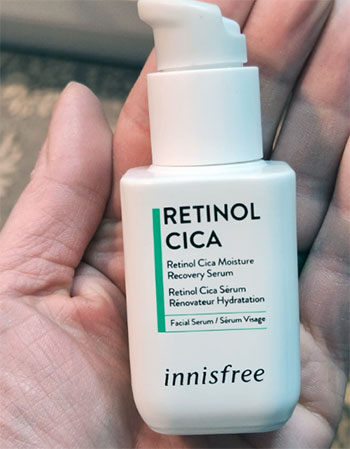
The first night, I pumped out two drops, as the bottle suggests, and smoothed them over my cleansed face. The texture? Lightweight, almost watery, and it sank in fast without that greasy residue I loathe. No tingling, no burning—just a subtle hydration that felt like my skin was drinking it up. I layered my usual moisturizer on top, half-expecting to wake up with a red, angry face. Instead, I woke up to skin that looked… calm. Smoother, even.
Over the next few weeks, I used it every other night, gradually bumping it to daily use. My pores around my nose, which usually look like tiny craters, started to shrink. Those pesky red marks from old breakouts? Fading, slowly but surely. My skin felt softer, like I’d been secretly exfoliating without the sting of a scrub. The best part? No irritation. None. For someone whose skin throws a tantrum at most active ingredients, this was a revelation. It’s not a miracle worker—my deeper acne scars are still there—but the overall texture and clarity of my skin have leveled up. I’m not alone in this love affair either; friends who’ve tried it rave about its gentle touch and noticeable glow.
Pros Of Innisfree Retinol Cica
- Gentle Enough for Sensitive Skin: I can’t stress this enough: this serum is a godsend for sensitive skin. Unlike other retinols that left my face red and flaky, Innisfree’s formula feels like a hug. The cica and ceramides work overtime to strengthen your skin barrier, so you’re not trading smoothness for irritation. I’ve used it day and night without a single flare-up, which is a miracle for someone whose skin protests at the slightest change. Reviews – users with reactive skin will appreciate how it softens and calms while still delivering results.
- Visible Results Without the Drama: After a month, my skin was noticeably smoother, with smaller pores and less redness. My post-acne marks faded, and my complexion looked brighter, almost like I’d been sneaking in professional facials. It’s not going to erase deep wrinkles or scars overnight, but for texture, clarity, and subtle anti-aging, it delivers. The lightweight texture absorbs fast, so you’re not left greasy, and it layers beautifully under moisturizer or sunscreen. A little goes a long way—two pumps cover my face and neck, making the 30ml bottle last ages.
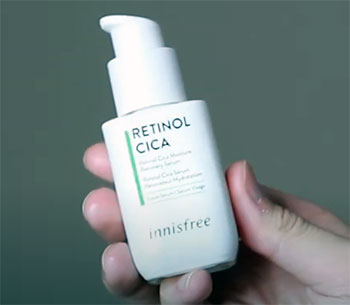
- Beginner-Friendly and Versatile: If you’re new to retinol, this is your perfect entry point. The low 0.015% retinol concentration, combined with soothing ingredients, minimizes the risk of irritation, making it ideal for first-timers. You can ease into it, starting with twice a week and building up to daily use. I love that it’s stable enough for daytime use (with sunscreen, of course), giving you flexibility. Whether you’re tackling acne, pores, or early fine lines, it’s a versatile addition to any routine.
- Affordable Luxury: At around $37, it’s not the cheapest serum, but it’s a steal for the quality. Compared to high-end retinols that cost triple, Innisfree offers comparable gentleness and efficacy without breaking the bank. The eco-friendly packaging and clean formula add to the value, making it feel like a premium product at a mid-range price. For the results and longevity, it’s a smart investment.
Also Read: My Thoughts On Sunday Riley Retinol
Cons Of Innisfree Retinol Cica
- Not a Heavy Hitter for Advanced Users: If you’re a retinol veteran used to prescription-strength tretinoin or high-potency retinal, this might feel underwhelming. The 0.015% retinol is gentle, which is great for beginners but may not cut it for those chasing dramatic anti-aging or scar-fading results. I noticed improvements, but my deeper acne scars didn’t budge much. If you’re after aggressive resurfacing, you might need to pair this with stronger actives or look elsewhere.
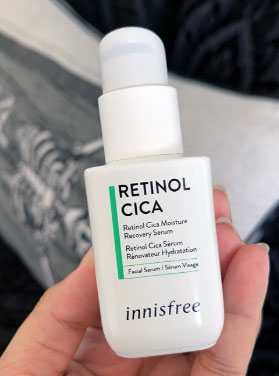
- Subtle Scent Issue: Most users, including me, find the serum scent-free, but a few mentioned a faint “pencil shavings” smell. It’s not overpowering, and I barely noticed it, but if you’re sensitive to odors, it’s worth noting. The scent dissipates quickly, so it didn’t bother me, but it could be a quirk for some.
- Slow and Steady Wins the Race: Don’t expect overnight miracles. The gentle formula means results take time—think weeks, not days. My pores and texture improved after a month, but if you’re impatient or want instant gratification, you might feel let down. Consistency is key, and while I saw changes, they were gradual. Stick with it, and you’ll likely be pleased, but don’t bank on a quick fix.
Comparison With Other Brands
- The Ordinary Granactive Retinoid Emulsion: The Ordinary’s Granactive Retinoid Emulsion is another beginner-friendly option, often praised for its gentle approach. Like Innisfree, it’s emollient and hydrating, but it uses a different retinoid—hydroxypinacolone retinoate—which some find less irritating than pure retinol. I tried it and liked its creamy texture, but it felt heavier on my skin compared to Innisfree’s watery lightness. The Ordinary is dirt cheap, often under $15, but lacks the soothing cica and niacinamide that make Innisfree a multitasker. If budget is your priority, The Ordinary wins, but Innisfree feels more luxurious and calming.
- The Inkey List Retinol Serum: The Inkey List’s Retinol Serum is a creamy alternative, leaning more emollient than Innisfree’s serum. It’s gentle like Innisfree, with a similar price point around $20, and includes squalane for extra moisture. I found it nourishing but a bit thick for my combination skin, especially in humid weather. Innisfree’s cica and salicylic acid give it an edge for acne-prone skin, while The Inkey List feels more geared toward dry types. If you want a lightweight, acne-focused retinol, Innisfree pulls ahead; for intense hydration, The Inkey List might suit you better.
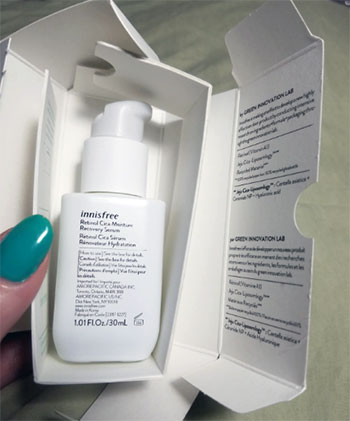
- Paula’s Choice 0.3% Retinol + 2% Bakuchiol Treatment: Paula’s Choice offers a more potent option with 0.3% retinol and bakuchiol, a plant-based retinol alternative. It’s pricier, around $60, and targets advanced users with visible aging concerns. I tested it and saw faster results on fine lines, but my sensitive skin protested with mild redness. Innisfree’s lower retinol and cica-heavy formula were kinder to my face, though less transformative for wrinkles. If you’re past the beginner stage and can handle stronger actives, Paula’s Choice is a powerhouse; for gentle daily use, Innisfree remains my go-to.
- Cosrx The Retinol 0.1 Cream: Cosrx’s Retinol 0.1 Cream is a solid middle ground, with a higher retinol concentration than Innisfree but still gentle enough for many. Priced around $25, it’s creamy and hydrating, with panthenol to soothe. I liked its richness for winter, but it felt occlusive on my oily days, unlike Innisfree’s featherlight finish. Cosrx is great for steady anti-aging, but Innisfree’s cica and salicylic acid make it better for acne and texture. If you’re easing into stronger retinols, Cosrx is a step up; for sensitive or acne-prone skin, Innisfree shines.
Tips For Innisfree Retinol Cica
- Start Slow and Build Up: If you’re new to retinol, don’t dive in headfirst. I started with twice a week, applying it at night after cleansing and toning. After two weeks with no irritation, I upped it to every other night, then daily. This gradual approach lets your skin adjust without freaking out. If you notice dryness or redness, scale back and layer a hydrating essence or toner underneath. Patience is your friend here—rushing can lead to irritation, and nobody wants a cranky face.
- Hydrate Like Your Skin Depends on It: Retinol, even a gentle one, can dry your skin if you’re not careful. I sandwich the serum between a hydrating toner and a rich moisturizer to lock in moisture. Innisfree’s Green Tea Seed Serum pairs beautifully for an extra hydration boost. On dry days, I add a lightweight facial oil after the serum for extra nourishment. Keeping your skin barrier happy ensures you can use the retinol consistently without flaking or tightness.
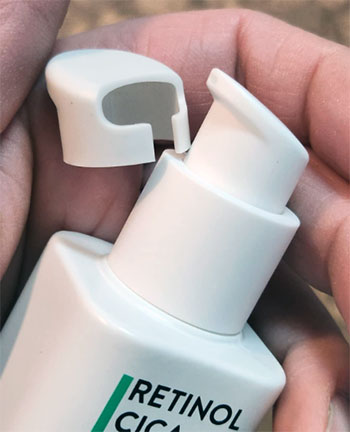
- Sunscreen Is Non-Negotiable: Retinol makes your skin more sun-sensitive, so sunscreen is your BFF. I slather on a broad-spectrum SPF 30 or higher every morning, even if I’m just sitting by a window. Innisfree’s serum is stable for daytime use, but UV rays can undo your progress and worsen pigmentation. A mineral sunscreen with zinc oxide works well for sensitive skin and won’t clog pores. Skip this step, and you’re asking for trouble—don’t say I didn’t warn you.
- Avoid Mixing with Harsh Actives: I learned the hard way that pairing retinol with exfoliants like AHAs or vitamin C can irritate sensitive skin. Use Innisfree’s serum solo at night, and save actives like glycolic acid or ascorbic acid for mornings. If you’re set on combining, wait at least 30 minutes after applying the retinol to let it absorb, or alternate days. This keeps your skin calm and lets the retinol work its magic without competition.
- Store It Right: To keep the retinol stable, store the bottle in a cool, dark place—your bathroom cabinet works fine, away from steamy showers. The ceramic bottle helps protect the formula, but heat and light can degrade retinol over time. I keep mine on a shelf, not my sunny windowsill, and it’s lasted months without losing potency. A little care goes a long way in stretching your investment.
Read More: My Thoughts On MEDIHEAL Retinol Collagen Lifting Pad
Frequently Asked Questions (FAQ)
Yes, you can use it daily, especially since it’s formulated for sensitive skin with a low 0.015% retinol concentration. I started with twice a week to test my skin’s tolerance and worked up to nightly use without issues. If you’re new to retinol or have very sensitive skin, ease in gradually and monitor for dryness or redness. Always follow with a moisturizer to keep your skin happy.
This serum tackles multiple concerns: it smooths texture, shrinks pores, fades post-acne marks, and addresses early signs of aging like fine lines. The retinol boosts cell turnover, while cica soothes redness and strengthens your skin barrier. It’s ideal for acne-prone or sensitive skin, helping with blemishes and uneven tone without the harshness of stronger retinols. I’ve seen my skin get clearer and more radiant with consistent use.
The serum contains 0.015% retinol, equivalent to 500 IU per gram. It’s a low concentration, making it gentle for beginners or sensitive skin. While some debate the exact percentage (early estimates suggested 0.0005%), Innisfree’s website and recent reviews confirm 0.015%. It’s not as potent as prescription retinoids, but it’s effective for gradual improvements without irritation.
Absolutely, cica is a fantastic partner for retinol. Centella Asiatica soothes irritation, reduces redness, and strengthens the skin barrier, counteracting retinol’s potential drying effects. In Innisfree’s formula, cica’s encapsulated in liposomes for deeper penetration, making the retinol gentler and more tolerable. My sensitive skin loves this combo—it’s like retinol with a safety net, keeping irritation at bay while delivering results.
Final Thoughts
If you’re ready to dip your toes into retinol without the fear of a skincare disaster, Innisfree’s Retinol Cica Moisture Recovery Serum is your ticket. It’s gentle, effective, and perfect for sensitive skin or beginners, delivering smoother, clearer skin without the drama. From its soothing cica to its lightweight feel, it’s a product that proves you don’t need to suffer for beauty. Grab a bottle, start slow, and watch your skin thank you. You won’t regret it.
